Situated in the Northern Tablelands of New South Wales, Armidale, is approximately halfway between Sydney and Brisbane, on the New England Highway.
Anaiwan Aboriginal People
Armidale is part of the traditional lands of the Anaiwan Aboriginal people. But the Gumbaynggirr people and others, also claim this area as part of their traditional lands, on which they lived as hunters and gatherers.
During summer to autumn, Aboriginal groups
would camp around the tablelands, but they would travel to coastal regions or the western river systems for winter.
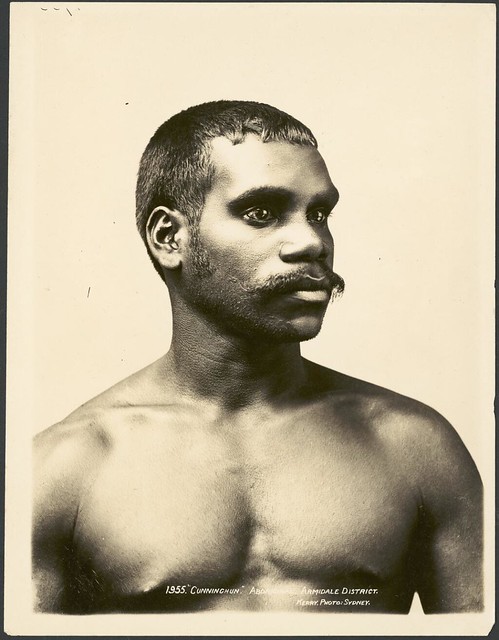 |
| Studio portrait of Cunningham, a young Aboriginal man, Armidale district, New South Wales / Charles Kerry, circa 1892, National Library of Australia |
 |
| An account of four years' travels in Australia (1889) |
With European arrival and pastoral expansion, many Anaiwan people were dispossessed of their lands. The
changing structural conditions later led to some Anaiwan people living at the local rubbish dump, in very squalid conditions. A place that they called "Dark Town". However, many other Aboriginal people acquired English and began working on New England pastoral stations, which led to the decline of the Anaiwan dialect.
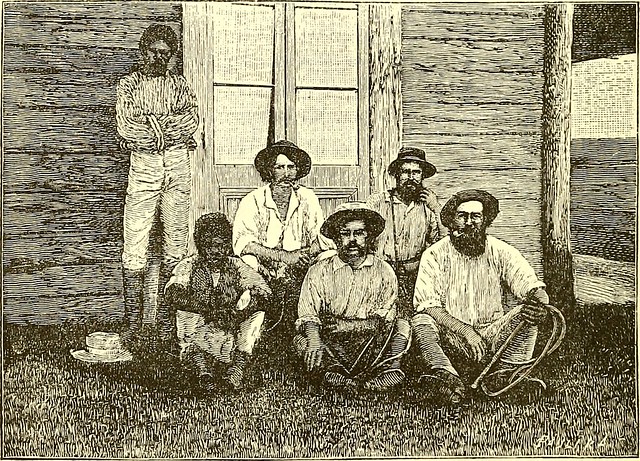 |
| An account of four years' travels in Australia (1889) |
According to Callum Clayton-Dixon, an Anaiwan linguist and historian, The Tableland regions sustained a much smaller Aboriginal population than the surrounding areas. He says, "analysis of historical data reveals that there would have been no more than 500 first-language Anaiwan speakers at the onset of the colonial occupation in 1832, compared with many thousands in adjacent regions."
Clayton-Dixon also claims that by the early 1840s, English-speaking colonists had outnumbered Anaiwan speakers.
Today, Callum Clayton-Dixon is involved in the Anaiwan Language Revival Program, which was established in 2016. He credits self-taught anthropologist R H Mathews, who worked with Aboriginal people and anthropologist A R Radcliffe-Brown, who carried out extensive fieldwork with Aboriginal people, with providing the information to allow the resurrection of the Anaiwan language.
 |
| King Yarry / Yarrie Campbell on the right talking to a Mr Jakes, at the Armidale Show, Sydney Mail, 25 March 1903 |
Aboriginal rock art can be seen at the Mount Yarrowyck Nature Reserve, which is located 30 kilometres (19 minutes drive) west of Armidale. Or visit the
Armidale Aboriginal Cultural Centre.
 |
| The Mount Yarrowyck Nature Reserve. Art between 150 to 500 years old |
The Europeans
John Oxley, the surveyor-general of New South Wales, came near Armidale when he journeyed to the Apsley Falls in 1818 during his exploration of eastern Australia. His notes were the first detailed description of the inland of Australia.
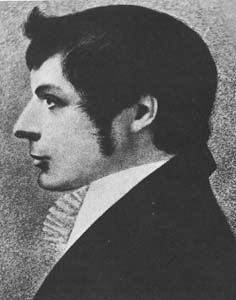 |
| John Joseph William Molesworth Oxley (1784 – 25 May 1828 |
Oxley's favourable reports had the effect of encouraging pastoral interest in the region. Hamilton Collins Sempill established "Wolka" sheep run in 1832 and became the areas first settler. Semphill built a slab-hut which may have been located near where the "Langford" property now stands outside Walcha.
Armidale was named after "Armadale" on the Isle of Skye in Scotland, the ancestral home of the then, Commissioner for Crown Lands, George James McDonald.
Captain Maurice O'Connell, the son of Major General, Sir Maurice O'Connell, the Commander-in-Chief of the colony established "Gara" and "Hillgrove" stations to the east of Armidale. Hillgrove was later sold to Richard Hargrave and Gara to Edward Allingham, who also ran a mill and store at Armidale.
At this time, slab-huts and sheep were becoming a common sight in the region.
 |
| Slab dwellings and shingled roofs, on the road between Guyra to Armidale,New South Wales. Courier-Mail (Brisbane, Qld. : 1933 - 1954), Wednesday 27 February 1935 |
In 1835, Henry and William Dumaresq established sheep runs at "Saumarez" and "Tilbuster "stations in the area. Henry Dumaresq had come to Australia in 1825, to work as a private secretary to his brother-in-law, Governor Darling.
Collision of Cultures
Aboriginal people resisted the growing number of European
settlers in the region and hostilities broke out. In February 1838, Lieutenant George Cobban led Mounted Police up from the Peel River into southern New England and according to an article in the Sydney Gazette, the expedition aimed “to employ coercive measures” against local Aboriginal people, who had “at length roused the attention of the Government”.
A few years later in 1839, George James "Humpy" Macdonald was appointed as the Commissioner for Crown Lands to the New England district. McDonald then set up his headquarters, "on an extensive open Plain - well watered and sheltered - centrically situated, and continguous to the Extensive Establishments of Messrs. Mackenzie, Dangar and Dumaresq." McDonald named the place "Armidale", after his ancestral home, "Armadale" estate on the Isle of Skye in Scotland. McDonald's
privately built dwelling was then later sold to
Major Innes and used as the first public house.
MURDER BY THE BLACKS.
Extract from a letter dated New England,
March, 25th.
It becomes my painful and unpleasant
duty to inform you that on Thursday
the 17th, a shepherd in charge of your sheep was
murdered by the blacks and that fourteen of your
sheep were slaughtered by them. On the shepherd
not making his appearance as usual at sundown,
my younger brother and I with all the men we
could muster went in search the whole night, and
at sunrise the following morning we came on an
encampment of blacks on the falls of the McLeay
River, into which they made their escape, leaving
the heads and skins of fourteen sheep. I
immediately reported the circumstance to Mr.
McDonald the commissioner whom I daily expect
here, with his Mounted Police to drive these
murderous savages from this quarter and I trust
he will if possible make an example of somc of them.
Sydney Herald (NSW : 1831 - 1842), Friday 1 May 1840
Major Innes, who was the commandant of the Port Macquarie penal settlement for a period, organised convicts to build a road which followed John Oxley’s inland route to the Tablelands. Innes then built a store at Armidale, to supply the growing number of settlers.
Settlers were coming to the region to
establish themselves as farmers, retailers, publicans and millers. Jobs for bullock drivers, shepherds, drovers, labourers and others, were also an attraction, as was the growing prosperity of the region.
The first buildings of the colonial period, many built from bark, were constructed around Rusden, Beardy and Dumaresq streets. Later,
larger houses were built around South Hill from Barney to Mann Streets. Armidale West developed as a working-class area around Jessie Street. While Brown Street has many heritage buildings displaying a variety of styles.
Armidale's first post office was established in 1843.
The first courthouse in Armidale was a slab-walled courthouse constructed in 1844 by Commissioner George Macdonald.
 |
| Maitland Mercury and Hunter River General Advertiser (NSW : 1843 - 1893), Saturday 6 December 1845 |
A Growing Town
The Armidale Inn was shown on the Gorman map of 1846. It was located in the area where the Visitors’ Centre car park now exists. The building was built using available materials like round poles, slabs and bark.
Armidale was surveyed in 1848 and gazetted in 1849.
Surveyor John Galloway completed his street plan for Armidale in 1849 and observed that he was glad to hurry away from Armidale because, “the low debauchery of the place, which seduces them [his men] into great irregularities”. Galloway was referring to the excessive drinking of the inhabitants of the region. There were five licensed pubs for around 100 people, at this time.
Land was offered for sale at Armidale in 1849 and brick and stone dwellings began to appear and farms were established. Gold was discovered close by at Rocky River, Gara Gorge and Hillgrove and the ensuing gold rush bolstered
the town's population further.
Child’s Brickworks was shown in maps dating back to 1848-9 located in university parklands south of and close to, Dumaresq Creek. Early brickmakers included James Stevens and William Lilly and John Smith (the latter two killed by lightning in 1848).
 |
| Allingham's Mill from panorama of Armidale, (Armidale Folk Museum collection) |
Edward and Elizabeth Allingham (nee Morrow) established Allingham's Mill in Beardy Street, opposite the street named after him. Edward operated the Rose Inn in 1850, as well the Union Store.
Ames Starr bought Mihi station in 1852.
The Armidale Express newspaper began in 1856, when the population was 858.
 |
| Office of The New England Free Press and T. J. Wilkinson's New England Store, Illustrated Sydney News (NSW : 1881 - 1894), Saturday 5 July 1884 |
Joseph Scholes (senior) was the proprietor of the Crown Inn in 1856.
The Wellington Inn on Beardy Street opened in 1858. A new 3 story hotel was built on this site in May 1874.
In the 1850s, Armidale consisted
mostly of slab-huts and cottages built on an area of high ground south of Dumaresq Creek. The small timber English Church was opened for worship by 1850. The New England Hotel was built in 1857 and in 1859, John Moore's store was standing constructed from weatherboard with a shingle roof (formerly owned by James Gilchrist). And John Trim's store.
 |
| John Moore & Co. Flour Mills, Beardy St, Armidale, NSW, Illustrated Sydney News (NSW : 1881 - 1894), Saturday 5 July 1884 |
Law and The Land
A new courthouse was constructed in 1859. During renovations in the 1870s, a time capsule was
placed beneath the floorboards of the courthouse by the Clerk of Petty Sessions, Sydney Blythe. It is surmised that Blythe may have been drunk, as he dedicated the time capsule (which was contained in a cognac bottle), "For and on Behalf of my numerous creditors".
As well as sheep runs, wheat, maize, oats and potatoes were being grown and by the 1860s, cherries and apples were being harvested.
 |
| Views of Armidale, NSW, Illustrated Sydney News (NSW : 1853 - 1872), Saturday 16 June 1866 |
 |
| Armidale Public School, NSW, first establsihed in 1861, Australian Town and Country Journal (Sydney, NSW : 1870 - 1907), Saturday 23 September 1871 |
A gaol was built on South Hill in 1863.
John Richardson and Co. bought Gilchrist and Mather's store and later, it became John Moore's store in 1872.
 |
| John Richardson and Co.'s offices, Freeman's Journal (Sydney, NSW : 1850 - 1932), Saturday 6 October 1900 |
Building commenced in Brown Street by builder John Barnes in 1863. 160 Kirkwood Street, Armidale is an example of a farmhouse
which was built by Joseph Daly in 1873.
The Commercial Banking Company of Sydney opened an Armidale branch in 1864.
Market Square had been envisaged as a major civic square for the town, but it never eventuated.
A. B Moses's Tannery and boot and shoe factory was located on the south side of a tributary of Dumaresq Creek on the north side of Tancredi Street. The tannery is shown on the 1867 map of Armidale.
Bushranger!
The infamous bushranger, "Captain Thunderbolt", who was born at
Windsor, New South Wales, escaped from Cockatoo Island and roamed the New England district during the 1860s, as he enjoyed a crime spree at nearby Uralla. The Wellington Inn at Armidale that Thunderbolt almost robbed, is now the Tattersalls Hotel. His highway robbery ended when he was shot by police at Kentucky Creek.
 |
| Frederick Ward, Captain Thunderbolt |
 |
| Constable Alexander Binning Walker, who killed the bushranger Thunderbolt, ca. May-June 1870 / photographer A. Cunningham, Armidale, NSW |
Business and Education
 |
1. Mrs. Clarke's Millinery and Dressmaking Estabishment. 2, Gawthorp, Crossman, and Garvin, Auctioneers,
Stock and Commission Agents. 3. John A. MacDonald, Solicitor and Notary Public |
 |
| Mr W. Miller's business premises, Australian Town and Country Journal (Sydney, NSW : 1870 - 1907), Wednesday 13 July 1904 |
 |
| F Braund and Co. establishment, Australian Town and Country Journal (Sydney, NSW : 1870 - 1907), Wednesday 13 July 1904 |
 |
| Armidale Public School, 1872 |
Mrs (Angela) Nina Spasshatt opened a school at Arran House in 1874, after her husband Dr Samuel Spasshat, who had been practising in Armidale since 1863, died and she needed to support the family. This school lay the foundations of Armidale as an educational centre. This couple are mentioned in the book, "White Beech: The Rainforest Years", by Germaine Greer.
The Rail Arrives
The railway arrived at Armidale 1883.
Armidale was proclaimed a city in 1885, with a population over 2000.
In 1884, the Wellington Inn became Tattersalls Hotel, after it was sold to Patrick Wade for the sum of £5,000.
Booloominbah at Armidale was completed in about 1888.
 |
Booloominbah at Armidale was completed in about 1888. Sydney Mail (NSW : 1912 - 1938), Wednesday 29 November 1916
|
The railway from Armidale to Queensland was completed in 1888.
Building Boom
 |
| 1. Anglican Cathedral, 2. Presbyterian Church, #. Roman Catholic Cathedral. Illustrated Sydney News (NSW : 1881 - 1894), Saturday 5 July 1884 |
The first appointed clergymen to the district were the Reverends, Tinkham and Morrison for the Church of England and Presbyterian denominations respectively; and the Reverend Father M'Carthy for the Roman Catholic body.
In the late 1800s, there was a big surge in the building of churches in Armidale, including St Peter's Anglican Cathedral and St Mary's Roman Catholic Cathedral. The building of schools and
educational facilities began to dominate after this, leading to the establishment of New England University in the 1930s.
The city centre was laid out in a grid of streets. The main street is called Beardy Street, named for two of the founding settlers of the town who had beards, Duval and Chandler.
The mining boom at Hillgrove, twenty-four kilometres east of Armidale, helped protect Armidale from the catastrophic effects of the depression during the 1890s.
The Imperial Hotel on Faulkner St, was built on this site in 1890.
 |
| The Imperial Hotel is Armidale's oldest surviving hotel, built in 1889, Australian Town and Country Journal (Sydney, NSW : 1870 - 1907), Saturday 27 September 1890 |
 |
| Mallam and Co. Druggist, Armidale, Freeman's Journal (Sydney, NSW : 1850 - 1932), Saturday 6 October 1900 |
The Gara River Hydro-Electric Scheme, which was built from 1893 to 1895, was the first substantial hydro-electric scheme to supply electricity to Australia.
 |
| West End Football Club, Armidale, NSW, Sydney Mail and New South Wales Advertiser (NSW : 1871 - 1912), Wednesday 20 January 1904 |
 |
| Honnar's Central Hotel, was located cnr. Rusden and Marsh Streets, Armidale, New South Wales, Sydney Mail and New South Wales Advertiser (NSW : 1871 - 1912), Wednesday 12 April 1905 |
The Chinese
Dr Ah Foo is buried in the general section of the Armidale cemetery. He died in 1903 at the age of 55. His obituary in the Armidale Express, 6 November 1903, reads:
 |
| Australian Star (Sydney, NSW : 1887 - 1909), Tuesday 11 August 1891 |
"A Chinese resident of Armidale, known as “Dr” Ah Foo, died at his residence on Wednesday evening. He had been ailing for some weeks from an internal malady, caused by a kick from a horse some years ago, and although he called in medical assistance he declined to permit the necessary operation which might have saved his life. Deceased was 55 years of age, and had practised as a herbalist in Armidale with some success for many years. His father was a doctor in China, and a brother has recently commenced business as a storekeeper in Glen Innes. Ah Foo was a man of very benevolent instincts, and was a constant subscriber to the funds of the hospital. The funeral took place on Wednesday afternoon, and was largely attended by Chinese from all over the district, and from Glen Innes and Emmaville." (see here)
Amazon Ladies Fire Brigade
The first all-female firefighting crew was recruited in 1901 at Armidale, New South Wales. Station Officer Minnie Webb was the first female Captain in Australia.
 |
| The Armidale Amazon Fire brigade, Australian Town and Country Journal (Sydney, NSW : 1870 - 1907), Wednesday 13 July 1904. The creation of the Amazon Ladies Fire Brigade and their operational and dress uniforms was inspired by Captain Webb of the paid firefighting brigade in Armidale. Captain J.T.A. Webb became captain in 1898. He held this position until his death on 17 May 1924. He formed the first women's fire brigade in the early 1900s and also instructed the all-female brigade at the New England Girls School and the fire squad at The Armidale School in October 1923 |
 |
| Armidale from Zions Hill looking South, Sydney Mail and New South Wales Advertiser (NSW : 1871 - 1912), Wednesday 25 March 1903 |
Good Times and Bad
 |
| Armidale Butter Factory, NSW, Australian Town and Country Journal (Sydney, NSW : 1870 - 1907), Saturday 24 May 1902 |
 |
| Owen's Cordial Factory, Armidale, NSW, Freeman's Journal (Sydney, NSW : 1850 - 1932), Saturday 6 October 1900 |
 |
| Beardy Street Armidale on Show Day, Sydney Mail and New South Wales Advertiser (NSW : 1871 - 1912), Wednesday 25 March 1903 |
 |
| Beardy Street on a Show Day, Sydney Mail and New South Wales Advertiser (NSW : 1871 - 1912), Wednesday 25 March 1903 |
 |
| Forbes Advocate (NSW : 1911 - 1954), Friday 28 February 1913 |
 |
| The late George Medhurst mail contractor in front of Armidale post office [and Imperial Hotel] about 1916, NAA |
 |
| Red Cross Home at Armidale, Mrs. Fred White (Armidale) some time ago generously placed half of her beautiful home, Booloominbah, at the disposal of the Red Cross Society for the use of returned convalescent soldiers. |
 |
| A sign of the times at Armidale, NSW, Sydney Mail (NSW : 1912 - 1938), Wednesday 8 October 1919 |
1940s and WWII
 |
FIRST A.I.F. VOLUNTEERS FROM ARMIDALE Are Still Together on die Sands of Palestine
The photograph published below shows a group of the first A.LF. volunteers from Armidale. It was taken in Palestine, andit would seem that the men are in great heart and health. Standing (left to right): L/Cpl. T. T. Harrison. Pte. D. E. Reid, Pte. G. Caling, Pte. H. E. Elks, Pte. R. Miller, Pte. R. C.
Holt, Pte. J. H. Bishop, Pte. W. Bliss, Pte.' G. G. Williams. Seated Cleft to right): Cpl. J- W. Hanmer, CpL J. R. Richardson, Sergt. :W. Regan, Lieut.-Col. J. W. Dougherty, Lieut. N. Swinton.Sergt. D. Callaghan, Cpl. S. E. Court, Cpl. A. Hiddins.Armidale Express and New England General Advertiser (NSW : 1856 - 1861; 1863 - 1889; 1891 - 1954), Wednesday 27 November 1940 |
 |
MORPHINE for the relief of the wounded will be extracted from a crop of opium poppies harvested at Armidale, N.S.W., by the Women's Agricultural Security Production Services.Courier-Mail (Brisbane, Qld. : 1933 - 1954), Monday 24 January 1944 |
Immigration
Large settlements of industrious German people made their home around Armidale during the middle of the 19th century and there was Chinese
immigration dating back to the gold rush period. In 2017, two hundred
refugees from Iraq and Syria were to be settled in the Armidale region.
Around Armidale
 |
| St Peters Cathedral, Armidale, NSW, built from 1875 |
 |
| Saints Mary and Joseph Catholic Cathedral,Armidale, NSW, built from 1911 to 1912. |
 |
| A. B Moses Tannery and boot and shoe factory was located on the south side of a tributary of Dumaresq Creek on the north side of Tancredi Street. The tannery is shown on the 1867 map of Armidale. The home of the Moses family was called Beaconsfield, named after Benjamin Disraeli (Lord Beaconsfield). Later, the name of the property was changed to Kiola by Archbishop White. The house has been used as a nursing home, student residence and a private home. The house was remodelled into a Federation style early last century.Kiola, 18 Millie Street, Armidale, former home of A. B Moses |
 |
| Trim & Co store is the oldest existing retail building in Armidale. Trim & Company Store was established about 1881, selling bulk produce. Later, the building was used as a shed storing chaff, a factory, workshop, timber and joinery works. John Trim who established the store was an ex-convict sentenced to fourteen years transportation in the colonies. He arrived on the ship Charles Kerr on 9 October 1837 and by 1838, he had been assigned to Crown Land Commissioner Macdonald of New England. He gained a respectable reputation and later became one of Armidale’s first Alderman. |
 |
| Saumarez Homestead, a National Trust property near Armidale. |
 |
| Saumarez Homestead kitchen, Armidale, NSW. The building dates from 1888 to 1906 |
 |
| J.R. Richardson and Company Limited, circa 1842. John Mather's Armidale Stores existed on this site before this was built |
 |
| Located on Beardy Street, Armidale, this building opened as the Australian Joint Stock Bank in April 1889 and was constructed between 1887 and 1889 |
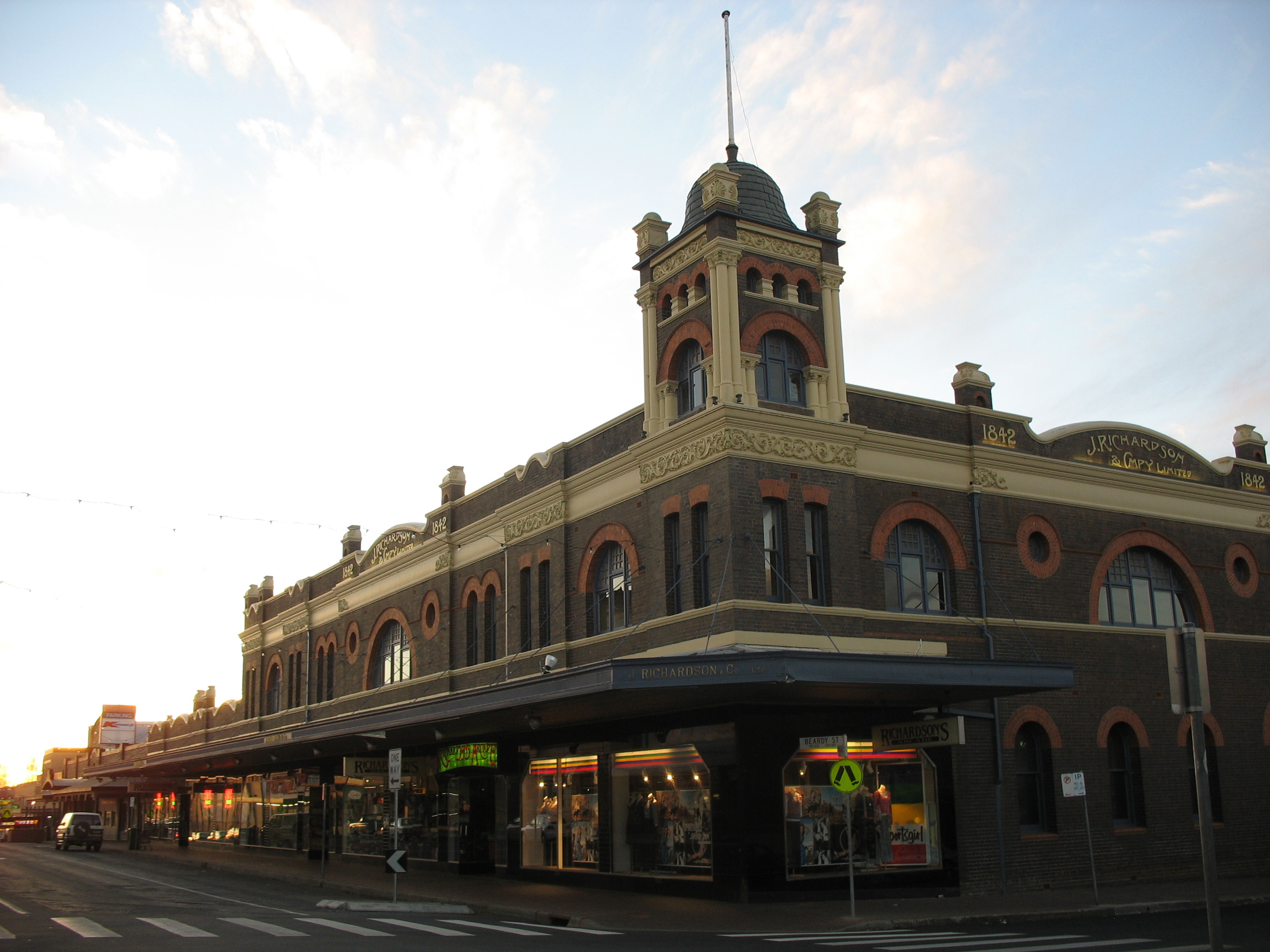 |
| Another view of Richardson's Emporium, now known as Richardson's Arcade. Alexander Richardson, "a gentleman of independent means" arrived in Armidale in 1872, bought John Moore's store and was elected to council in 1879. |
 |
| Armidale railway station. The Armidale Railway Station is a high Victorian building built by Edmond Lonsdale in 1882=3. The first official train arrived in Armidale on1 February 1883. The cast iron was made at New England Foundry in Uralla by Henry Sheldon Goddard |
 |
| Opawa, Federation house, 65 Mann Street, Armidale. Probably, circa 1915 |
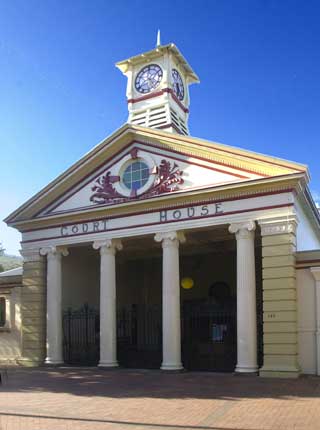 |
| The former Armidale Courthouse. The first courthouse in Armidale was constructed in 1844 by Commissioner George Macdonald. In July 1859, a Court of Quarter Sessions was established in Armidale and a new courthouse constructed |
 |
| Booloominbah, now part of the University of New England |
 |
| Armidale Town Hall, 1882 |
 |
The former St Patrick's Orphanage, Armidale.
Built by G F Nott, the foundation stone was laid by Archbishop Kelly of Sydney in 1919 and the orphanage was opened two years later. |
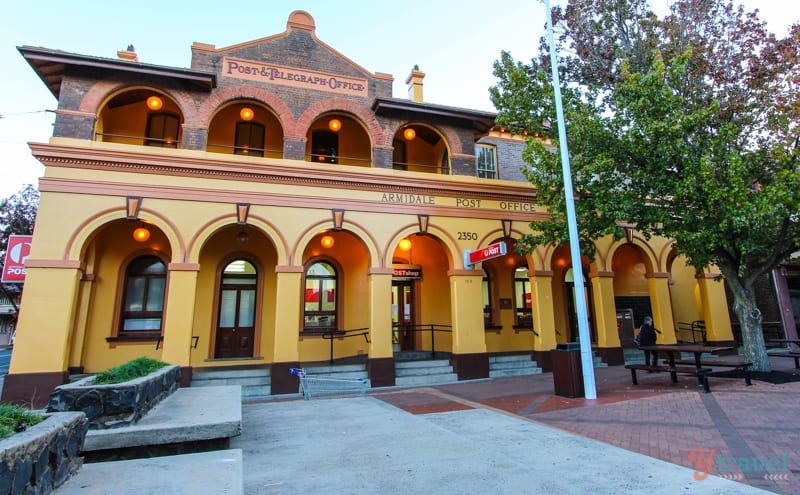 |
| Armidale Post Office, 1880 |
 |
| This photo of Petersons Armidale Winery & Guesthouse is courtesy of TripAdvisor |
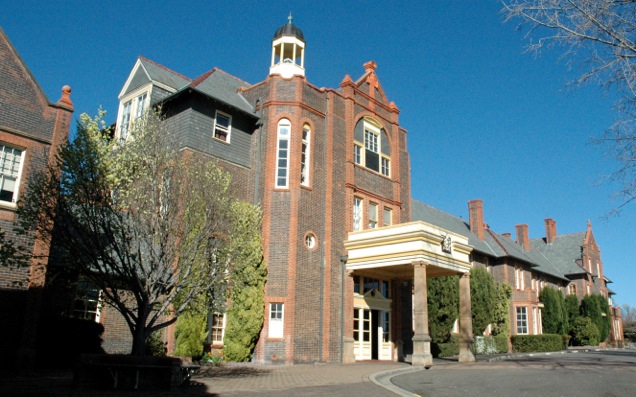 |
| The Armidale School is anAnglican, day and boarding school located in Armidale, NSW |
 |
| Heritage building Armidale area |
 |
| Originally named the Armidale Hotel, the Wicklow Hotel was established by David Kirkwood in 1853. Jan Smith |
 |
| Imperial Hotel Armidale built 1890 with returns from the Hillgrove gold mine rush denisbin |
 |
Royal Hotel, Armidale, established in 1880 Jan Smith
|
 |
| Whitebull Hotel, Armidale, circa 1876 Jan Smith |
 |
| St. Kilda Hotel, Rusden St Armidale, since 1861 |
 |
| Built by Henry Guy Mallam, one of Armidale’s pioneer chemists and druggists, in 1870, Mallam House is mid-Victorian era style. |
 |
| The house named Cotswold was built in the late 1800s, by William Curtis, of the Armidale Drapery firm of W. Curtis Ltd. The building, now used for accomodation |
 |
| "Newton Terrace", 175 Marsh Street, Armidale, home of Joseph Scholes |
 |
| Art Deco building in Beardy Street, Armidale, NSW |
 |
| S.H. Smith House, was once called "The Girrawheen Boarding Establishment", was constructed in 1889 |
 |
| Lands Title Office building in Armidale New South Wales. Built 1880, denisbin |
 |
| Australian Mutual Provident Society building, Armidale, NSW |
 |
| The former Masonic Lodge Hall, Armidale NSW, circa 1860 |
 |
| "Southall" was built for Dr George Wigan and was completed in 1886 |
 |
| Hanna’s Arcade, Armidale, NSW, was established in 1921 |
 |
| Armidale in Autumn, NSW |
 |
| The Armidale School opened its doors to the first students in February 1894 |
 |
| Armidale Pipe Band, NSW |
Things To Do and Places To Go
Self-guided Heritage Walk - Armidale Regional Council
Self-guided Heritage Drive
Armidale Bicentennial Railway Museum
The Armidale Folk Museum
The Museum of Antiquities at the University of New EnglandSaumarez Homestead
Railway Mineral & Train Museum
Dr John Ferry’s 2007 book, Brown Street Armidale NSW
Landowners In The Town of Armidale 1856-1871


































.jpg)
.jpg)
.jpg)

.jpg)










































